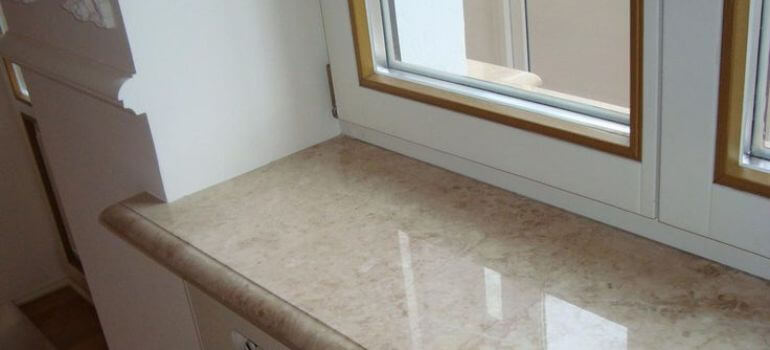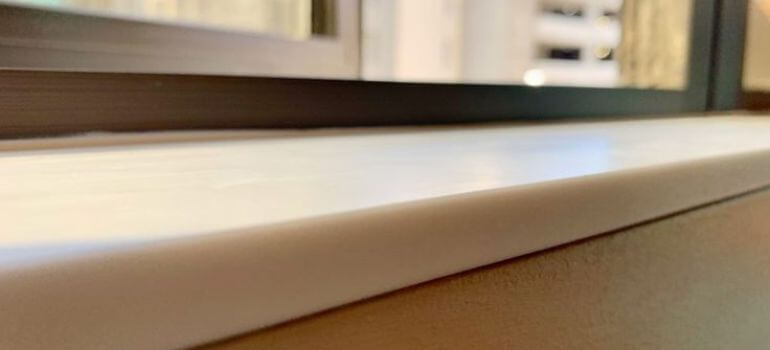When embarking on a home improvement project, understanding the subtleties of window design can profoundly impact the outcome of your renovation. The terms ‘window stool’ and ‘window sill’ are often tossed around interchangeably in discussions on interior architecture and window construction, yet they refer to distinct components with unique contributions to both function and form. In this exploration, we’ll decode the difference to shed light on these important features. Whether you are a homeowner looking to enhance your living space, or you simply harbor a curiosity about the finer points of window anatomy, grasping the distinction between these elements is a valuable aspect of architectural literacy.
Key Takeaways
- Discerning between window stool and sill is crucial for accurate communication in home improvement ventures.
- Window stools and sills serve distinct purposes in terms of functionality and aesthetics within interior architecture.
- A clear understanding of window components can facilitate more informed decisions during window construction and design planning.
- Recognizing the role each element plays helps preserve architectural integrity and enhances the overall appeal of a space.
- Insight into the terminology empowers homeowners in their collaboration with architects, designers, and contractors.
- Appreciating the historical development of window design enriches the context for contemporary window construction choices.
Introduction to Window Terminology

Understanding the window anatomy is essential for appreciating the nuances of building design and effectively discussing home improvement with professionals. In this section, we will break down various window components and clarify the architectural terminology associated with them.
Let’s begin with the frame. The window frame is the structural support that encases the entire window system and firmly attaches it to the surrounding wall. A frame can be crafted from a variety of materials and is a critical component in the overall insulation and integrity of the window.
- Pane: This is the glass part of the window and can be single, double, or even triple-glazed for better thermal performance.
- Mullions: These are the vertical or horizontal bars that divide the window into smaller panes, adding architectural interest as well as structural support.
- Jambs: On the sides of the window, jambs are the vertical parts of the frame that run parallel to the wall.
While these terms may be common knowledge for some, for others, they are a foundational aspect of window construction that facilitates clearer communication with contractors and enriches the understanding of one’s own living space.
| Component | Description | Common Materials | Design Significance |
|---|---|---|---|
| Frame | Encases the entire window and attaches to the wall | Wood, vinyl, aluminum, fiberglass | Integral for structural support, insulation, and overall window aesthetics |
| Pane | Glass part of the window, can have multiple layers | Glass, often tempered or laminated for safety | Crucial for light entry, insulation, and visibility |
| Mullions | Structural elements that divide the window into sections | Wood, vinyl, metal | Contributes to the architectural style and supports smaller panes |
| Jambs | Vertical parts of the frame | Wood, composite materials | Key for the proper alignment and operation of the window |
Familiarity with these components and terms not only assists in window components discussions but also enhances one’s appreciation for architectural terminology with an eye for building design.
Historical Evolution of Window Design
The journey through the evolution of windows is a fascinating chronicle that speaks volumes about the ingenuity of human design and the adaptation of architectural elements to suit various needs and aesthetics. The ancestral window structure dates back to mere openings in the dwellings of ancient civilizations, gradually morphing through many eras, influenced by ever-changing design trends. This transformation is clearly evident in the details of window components such as the stool and sill.
During the times of early architecture, the utility of a window was limited, offering little beyond light and ventilation. It wasn’t until the Gothic period that we observe the intricacies of window design taking a leap, with the introduction of stained glass and the prominence of arches in structures. Romanesque and Renaissance periods further molded the window structure, incorporating fine masonry and intricate woodwork that elevated the aesthetic of buildings significantly.
In examining the architectural history of the window, we discover that the Industrial Revolution marks a pivotal moment where advancements in technology enabled the mass production of glass. As a result, windows became larger, clearer, and more prevalent in buildings of all types. The emphasis on light and view in Victorian and Modern architectural styles changed the way the window stool and sill were perceived and utilized.
The architectural history of a home can often be read in the layers of paint on a window sill, the carpentry style of a stool, or even the type of glass pane held within. – Heritage Conservator
- The Victorian era saw the birth of bay windows with elaborate stools that served as focal points in parlors and drawing rooms.
- With the advent of the 20th century, the form and function of the window sill evolved further as architects like Frank Lloyd Wright blended windows seamlessly with the lines of the house.
- The Modernist movement leaned towards simplicity, the window stool became less ornate, and the sill transitioned into a minimalistic feature in line with design trends.
Today, the historical influences are readily apparent in both the restoration of classic homes and the edgy lines of contemporary architecture. Windows, particularly the stools and sills, embody heritage while complying with the requirements of energy efficiency and modern design paradigms.
| Period | Window Stool Characteristics | Window Sill Characteristics |
|---|---|---|
| Gothic | Often absent, focus on arches and stained glass | Stone ledges as structural support |
| Renaissance | Introduction of ornate wooden designs | Masonry details added for aesthetics |
| Victorian | Large, decorative, supports bay window displays | Extended protrusions in stone or wood, aiding water runoff |
| Modernist | Sleek and unadorned, blending with wall | Minimalist, often aligned flush with the wall |
| Contemporary | A mix of traditional and modern styles, can be personalized | Designed for insulation and water management, varied materials |
The architectural history not only narrates a story through the evolution of windows but also educates us on the importance of each component’s role in shaping the homes and buildings we inhabit. By tracing the history of the window stool and sill, we unlock an understanding of how form follows function, and how both are shaped by the cultural and technological capabilities of their time.
Understanding the Window Stool
The window stool, often confused with the window sill, is a distinctive component in the anatomy of a window. Found on the interior side, the window stool offers both functional benefits and an aesthetic touch to any room’s design. Understanding its deployment in interior window trim can elevate a home’s decor, meshing seamlessly with its architectural style.
Purpose and Functionality of a Window Stool
Primarily, the window stool acts as the interior counterpart to the outer window sill. It extends horizontally at the base of a window, creating a surface that can serve many functions. From a practical standpoint, a window stool provides a ledge for homeowners to embellish with plants, books, or decorative items. Additionally, it aids in directing condensation away from the wall, minimizing the risk of water damage within.
Design and Aesthetic Considerations
The design of a window stool is significant as it can influence a room’s ambiance. Its style should harmonize with the home’s overall architectural theme, whether it’s a traditional classic, modern minimalism, or any other design narrative. The choice of materials and finish contribute to this harmony, with options ranging from natural wood that adds warmth to a space, to engineered options that offer durability and a sleek finish.
- Compatibility with Architectural Styles:
- Traditional homes may opt for ornate woodwork in their window stool design.
- Contemporary spaces tend to favor a cleaner, more streamlined appearance.
Material Choices:
- Wood offers a timeless appeal, often used in classic interior window trim.
- Stone or marble can add a luxurious accent in a sophisticated interior.
- Composite materials are valued for their durability and maintenance ease.
A well-designed window stool not only supports the functional dynamics of a window structure but also infuses character into a room’s decor. As we delve deeper into window ledge styles and materials, it becomes evident how these elements can enhance or detract from a home’s overall aesthetics. Choosing the right design will pay homage to the underlying architectural style, while also affording the practical benefits needed in a home.
| Style | Material | Finish | Aesthetic |
|---|---|---|---|
| Traditional | Wood | Stained | Ornate, Classic |
| Modern | Composite | Painted or Raw | Sleek, Chic |
| Rustic | Reclaimed Wood | Natural | Earthy, Homely |
| Luxury | Marble | Polished | Elegant, Refined |
Exploring the Window Sill
The window sill plays a crucial yet often underappreciated role in both the function and form of window construction. Far from being just a decorative element, sills are paramount in preserving the integrity of a building’s exterior. Acting as a shield, they intercept precipitation and environmental wear, channeling water away to protect the wall beneath. Their design provides an essential barrier, preventing water from infiltrating the wall system where it could cause potential damage. As we examine the window sill further, understanding its importance in construction and the choice of materials used for its crafting will illuminate its dual role as a functional safeguard and an aesthetic contributor to a building’s façade.
The Role of a Window Sill in Construction
At its core, the **window sill function** is to serve as an exterior window ledge that effortlessly directs water away from the structure’s envelope. This critical characteristic stems from the sill’s slight outward slope, which actively combats the potential for moisture accumulation—a common precursor to mold, mildew, and structural rot. Moreover, sills add to the stiffness and support of the window installation, creating a robust and durable seal against the outside world. Through design ingenuity, they enable windows to withstand the rigors of nature without compromising the building’s endurance.
Materials Commonly Used for Window Sills
Selecting the right **construction materials** for window sills isn’t just a question of aesthetics; it’s a balance between visual appeal and **durability**. Natural stone, for instance, offers an impression of permanence and a veneer of classical elegance, while wood brings warmth and traditional charm to a home’s exterior. Vinyl is a modern alternative that promises minimal maintenance and substantial resilience in the face of adverse weather conditions. Each material carries specific maintenance requirements that impact the longevity and performance of the window sill, whether that means periodic sealing, painting, or simple cleaning. Integrating the correct materials doesn’t only fortify the architecture—it defines it.
FAQ
What’s the difference between a window stool and a window sill?
A window stool is the interior flat surface that extends horizontally from the bottom of a window, often referred to as the interior ledge. A window sill, on the other hand, is located outside, acting as an exterior shelf-like component that protects the wall beneath the window from water and structural damage.
Why is it important to use the correct window terminology?
Using the correct window terminology is crucial for clear communication, especially when discussing design details with contractors, designers, or during home improvement projects. It also helps you understand the functionality and design of window components better.
Can you explain the basic components of a window?
The fundamental parts of a window include the frame, which holds the entire window structure; the pane, which is the glass section that allows light in; the mullions, which are the bars or dividers that separate panes of glass; and the jambs, which are the side pieces running vertically along the window.
How have window stools and sills evolved historically?
Window stools and sills have evolved through various architectural periods, each introducing different styles and materials, influencing their appearance and function. The historical context can enhance our appreciation for contemporary design and explain the existence of certain window elements in their current forms.
What is the purpose of a window stool in home design?
The purpose of a window stool is two-fold. It serves as a practical element by providing a flat surface within the window structure and contributes aesthetically by adding to the room’s interior design. It can be crafted to match and complement various architectural styles.
What are the common materials used for making window sills and how do they differ in durability?
Materials commonly used for window sills include wood, stone, and vinyl. Wood sills are classic but require regular maintenance, stone sills are extremely durable and offer a high-end look, whereas vinyl sills are affordable, low-maintenance, and resistant to rot and moisture.
Does the design of a window stool affect the overall interior architecture?
Absolutely, the design of a window stool can significantly influence the interior architecture by complementing or contrasting with the room’s design. Choices in material, color, and style all contribute to the interior window trim and by extension, the room’s aesthetic.
Are there different styles of window stools to choose from?
Yes, there are various styles of window stools that cater to different interior designs and architectural themes. From traditional to contemporary, the design can be chosen to align with the home’s overall aesthetic and personal taste.
What role does a window sill have in construction?
In construction, a window sill’s primary role is to protect the wall beneath it from water runoff and external damage. It is an essential part of the window’s structure from a utility perspective, as it leads water away from the building to prevent damage.
How do I maintain and care for my window sills and stools?
Maintenance for window sills and stools varies based on the material. Wooden components may require sealing or painting to prevent moisture damage, while stone might need occasional sealing to maintain its appearance. Vinyl is generally low maintenance but should be cleaned regularly to prevent dirt build-up.
Window Stool vs Sill: Decoding the Difference
When embarking on a home improvement project, understanding the subtleties of window design can profoundly impact the outcome of your renovation. The terms ‘window stool’ and ‘window sill’ are often tossed around interchangeably in discussions on interior architecture and window construction, yet they refer to distinct components with unique contributions to both function and form. In this exploration, we’ll decode the difference to shed light on these important features. Whether you are a homeowner looking to enhance your living space, or you simply harbor a curiosity about the finer points of window anatomy, grasping the distinction between these elements is a valuable aspect of architectural literacy.
Key Takeaways
- Discerning between window stool and sill is crucial for accurate communication in home improvement ventures.
- Window stools and sills serve distinct purposes in terms of functionality and aesthetics within interior architecture.
- A clear understanding of window components can facilitate more informed decisions during window construction and design planning.
- Recognizing the role each element plays helps preserve architectural integrity and enhances the overall appeal of a space.
- Insight into the terminology empowers homeowners in their collaboration with architects, designers, and contractors.
- Appreciating the historical development of window design enriches the context for contemporary window construction choices.
Introduction to Window Terminology
Understanding the window anatomy is essential for appreciating the nuances of building design and effectively discussing home improvement with professionals. In this section, we will break down various window components and clarify the architectural terminology associated with them.
Let’s begin with the frame. The window frame is the structural support that encases the entire window system and firmly attaches it to the surrounding wall. A frame can be crafted from a variety of materials and is a critical component in the overall insulation and integrity of the window.
- Pane: This is the glass part of the window and can be single, double, or even triple-glazed for better thermal performance.
- Mullions: These are the vertical or horizontal bars that divide the window into smaller panes, adding architectural interest as well as structural support.
- Jambs: On the sides of the window, jambs are the vertical parts of the frame that run parallel to the wall.
While these terms may be common knowledge for some, for others, they are a foundational aspect of window construction that facilitates clearer communication with contractors and enriches the understanding of one’s own living space.
| Component | Description | Common Materials | Design Significance |
|---|---|---|---|
| Frame | Encases the entire window and attaches to the wall | Wood, vinyl, aluminum, fiberglass | Integral for structural support, insulation, and overall window aesthetics |
| Pane | Glass part of the window, can have multiple layers | Glass, often tempered or laminated for safety | Crucial for light entry, insulation, and visibility |
| Mullions | Structural elements that divide the window into sections | Wood, vinyl, metal | Contributes to the architectural style and supports smaller panes |
| Jambs | Vertical parts of the frame | Wood, composite materials | Key for the proper alignment and operation of the window |
Familiarity with these components and terms not only assists in window components discussions but also enhances one’s appreciation for architectural terminology with an eye for building design.
Historical Evolution of Window Design
The journey through the evolution of windows is a fascinating chronicle that speaks volumes about the ingenuity of human design and the adaptation of architectural elements to suit various needs and aesthetics. The ancestral window structure dates back to mere openings in the dwellings of ancient civilizations, gradually morphing through many eras, influenced by ever-changing design trends. This transformation is clearly evident in the details of window components such as the stool and sill.
During the times of early architecture, the utility of a window was limited, offering little beyond light and ventilation. It wasn’t until the Gothic period that we observe the intricacies of window design taking a leap, with the introduction of stained glass and the prominence of arches in structures. Romanesque and Renaissance periods further molded the window structure, incorporating fine masonry and intricate woodwork that elevated the aesthetic of buildings significantly.
In examining the architectural history of the window, we discover that the Industrial Revolution marks a pivotal moment where advancements in technology enabled the mass production of glass. As a result, windows became larger, clearer, and more prevalent in buildings of all types. The emphasis on light and view in Victorian and Modern architectural styles changed the way the window stool and sill were perceived and utilized.
The architectural history of a home can often be read in the layers of paint on a window sill, the carpentry style of a stool, or even the type of glass pane held within. – Heritage Conservator
- The Victorian era saw the birth of bay windows with elaborate stools that served as focal points in parlors and drawing rooms.
- With the advent of the 20th century, the form and function of the window sill evolved further as architects like Frank Lloyd Wright blended windows seamlessly with the lines of the house.
- The Modernist movement leaned towards simplicity, the window stool became less ornate, and the sill transitioned into a minimalistic feature in line with design trends.
Today, the historical influences are readily apparent in both the restoration of classic homes and the edgy lines of contemporary architecture. Windows, particularly the stools and sills, embody heritage while complying with the requirements of energy efficiency and modern design paradigms.
| Period | Window Stool Characteristics | Window Sill Characteristics |
|---|---|---|
| Gothic | Often absent, focus on arches and stained glass | Stone ledges as structural support |
| Renaissance | Introduction of ornate wooden designs | Masonry details added for aesthetics |
| Victorian | Large, decorative, supports bay window displays | Extended protrusions in stone or wood, aiding water runoff |
| Modernist | Sleek and unadorned, blending with wall | Minimalist, often aligned flush with the wall |
| Contemporary | A mix of traditional and modern styles, can be personalized | Designed for insulation and water management, varied materials |
The architectural history not only narrates a story through the evolution of windows but also educates us on the importance of each component’s role in shaping the homes and buildings we inhabit. By tracing the history of the window stool and sill, we unlock an understanding of how form follows function, and how both are shaped by the cultural and technological capabilities of their time.
Understanding the Window Stool
The window stool, often confused with the window sill, is a distinctive component in the anatomy of a window. Found on the interior side, the window stool offers both functional benefits and an aesthetic touch to any room’s design. Understanding its deployment in interior window trim can elevate a home’s decor, meshing seamlessly with its architectural style.
Purpose and Functionality of a Window Stool
Primarily, the window stool acts as the interior counterpart to the outer window sill. It extends horizontally at the base of a window, creating a surface that can serve many functions. From a practical standpoint, a window stool provides a ledge for homeowners to embellish with plants, books, or decorative items. Additionally, it aids in directing condensation away from the wall, minimizing the risk of water damage within.
Design and Aesthetic Considerations
The design of a window stool is significant as it can influence a room’s ambiance. Its style should harmonize with the home’s overall architectural theme, whether it’s a traditional classic, modern minimalism, or any other design narrative. The choice of materials and finish contribute to this harmony, with options ranging from natural wood that adds warmth to a space, to engineered options that offer durability and a sleek finish.
- Compatibility with Architectural Styles:
- Traditional homes may opt for ornate woodwork in their window stool design.
- Contemporary spaces tend to favor a cleaner, more streamlined appearance.
Material Choices:
- Wood offers a timeless appeal, often used in classic interior window trim.
- Stone or marble can add a luxurious accent in a sophisticated interior.
- Composite materials are valued for their durability and maintenance ease.
A well-designed window stool not only supports the functional dynamics of a window structure but also infuses character into a room’s decor. As we delve deeper into window ledge styles and materials, it becomes evident how these elements can enhance or detract from a home’s overall aesthetics. Choosing the right design will pay homage to the underlying architectural style, while also affording the practical benefits needed in a home.
| Style | Material | Finish | Aesthetic |
|---|---|---|---|
| Traditional | Wood | Stained | Ornate, Classic |
| Modern | Composite | Painted or Raw | Sleek, Chic |
| Rustic | Reclaimed Wood | Natural | Earthy, Homely |
| Luxury | Marble | Polished | Elegant, Refined |
Exploring the Window Sill
The window sill plays a crucial yet often underappreciated role in both the function and form of window construction. Far from being just a decorative element, sills are paramount in preserving the integrity of a building’s exterior. Acting as a shield, they intercept precipitation and environmental wear, channeling water away to protect the wall beneath. Their design provides an essential barrier, preventing water from infiltrating the wall system where it could cause potential damage. As we examine the window sill further, understanding its importance in construction and the choice of materials used for its crafting will illuminate its dual role as a functional safeguard and an aesthetic contributor to a building’s façade.
The Role of a Window Sill in Construction
At its core, the **window sill function** is to serve as an exterior window ledge that effortlessly directs water away from the structure’s envelope. This critical characteristic stems from the sill’s slight outward slope, which actively combats the potential for moisture accumulation—a common precursor to mold, mildew, and structural rot. Moreover, sills add to the stiffness and support of the window installation, creating a robust and durable seal against the outside world. Through design ingenuity, they enable windows to withstand the rigors of nature without compromising the building’s endurance.
Materials Commonly Used for Window Sills
Selecting the right **construction materials** for window sills isn’t just a question of aesthetics; it’s a balance between visual appeal and **durability**. Natural stone, for instance, offers an impression of permanence and a veneer of classical elegance, while wood brings warmth and traditional charm to a home’s exterior. Vinyl is a modern alternative that promises minimal maintenance and substantial resilience in the face of adverse weather conditions. Each material carries specific maintenance requirements that impact the longevity and performance of the window sill, whether that means periodic sealing, painting, or simple cleaning. Integrating the correct materials doesn’t only fortify the architecture—it defines it.
FAQ
What’s the difference between a window stool and a window sill?
A window stool is the interior flat surface that extends horizontally from the bottom of a window, often referred to as the interior ledge. A window sill, on the other hand, is located outside, acting as an exterior shelf-like component that protects the wall beneath the window from water and structural damage.
Why is it important to use the correct window terminology?
Using the correct window terminology is crucial for clear communication, especially when discussing design details with contractors, designers, or during home improvement projects. It also helps you understand the functionality and design of window components better.
Can you explain the basic components of a window?
The fundamental parts of a window include the frame, which holds the entire window structure; the pane, which is the glass section that allows light in; the mullions, which are the bars or dividers that separate panes of glass; and the jambs, which are the side pieces running vertically along the window.
How have window stools and sills evolved historically?
Window stools and sills have evolved through various architectural periods, each introducing different styles and materials, influencing their appearance and function. The historical context can enhance our appreciation for contemporary design and explain the existence of certain window elements in their current forms.
What is the purpose of a window stool in home design?
The purpose of a window stool is two-fold. It serves as a practical element by providing a flat surface within the window structure and contributes aesthetically by adding to the room’s interior design. It can be crafted to match and complement various architectural styles.
What are the common materials used for making window sills and how do they differ in durability?
Materials commonly used for window sills include wood, stone, and vinyl. Wood sills are classic but require regular maintenance, stone sills are extremely durable and offer a high-end look, whereas vinyl sills are affordable, low-maintenance, and resistant to rot and moisture.
Does the design of a window stool affect the overall interior architecture?
Absolutely, the design of a window stool can significantly influence the interior architecture by complementing or contrasting with the room’s design. Choices in material, color, and style all contribute to the interior window trim and by extension, the room’s aesthetic.
Are there different styles of window stools to choose from?
Yes, there are various styles of window stools that cater to different interior designs and architectural themes. From traditional to contemporary, the design can be chosen to align with the home’s overall aesthetic and personal taste.
What role does a window sill have in construction?
In construction, a window sill’s primary role is to protect the wall beneath it from water runoff and external damage. It is an essential part of the window’s structure from a utility perspective, as it leads water away from the building to prevent damage.
How do I maintain and care for my window sills and stools?
Maintenance for window sills and stools varies based on the material. Wooden components may require sealing or painting to prevent moisture damage, while stone might need occasional sealing to maintain its appearance. Vinyl is generally low maintenance but should be cleaned regularly to prevent dirt build-up.



